Evaluation of geological hazard susceptibility of collapse and landslide in Yuanyang County using slope units and random forest modeling
-
摘要: 针对基于栅格单元与定性定量方法模型在地质灾害易发性评价中存在模型预测精度低且使用较为频繁的不足与弊端,采用斜坡单元与机器学习方法之一的随机森林模型相结合开展元阳县崩滑地质灾害易发性评价。在ArcGIS中,利用曲率分水岭法划分出7851个斜坡单元。经过大量统计研究与地质环境条件分析,选取工程地质岩组、地貌类型、高程、坡度、坡向、曲率、起伏度、河流距离、断层距离等9个因子作为评价指标,并通过SPSS软件,将9个评价指标与灾点发育特征的关系进行数据分析,得出各评价指标权重。在SPSS中,采用随机森林模型,建立易发性评价模型,将元阳县崩滑地质灾害易发性划分为低、中、高、极高4类,所占面积分别为410.06 km2、470.21 km2、550.02 km2和776.87 km2,分别占元阳县面积的18.58%、21.30%、24.92%和35.20%。经与详查结果对比,评价结果与实际高度吻合。利用ROC曲线得出区划结果精度AUC值为92.7%,区划结果相当好。研究显示,元阳县中部和西南两个部分地质灾害集中,易发性极高。Abstract: The model based on grid unit and qualitative and quantitative method has the disadvantages of low prediction accuracy and frequent use in the evaluation of geological hazard susceptibility, was utilized to evaluate the potential for collapse and landslide in Yuanyang County. Using ArcGIS, 7851 slope units were divided via the curvature watershed method. Through a large number of statistical study and analysis of geological environment condition, nine evaluation factors were selected, including engineering geological petrofabric, landform type, elevation, gradient, slope direction, curvature, ups and downs, rivers, distance and fault distance. These factors were analyzed and their weights determined using SPSS software, in conjunction with data on the development characteristics of disaster points. The random forest model was then applied to establish a vulnerability evaluation model, which categorized landslide geological disaster in Yuanyang County into four types: low, medium, high and extremely high, occupying an area of 410.06 km2, 470.21 km2, 550.02 km2 and 776.87 km2 respectively. These areas correspond to 18.58%, 21.30%, 24.92% and 35.20% of Yuanyang County’s total area. The evaluation results were compared with the detailed investigation results and were found to be highly consistent. The accuracy of ROC curve was calculated at 92.7%, indicating a high level of accuracy. The central and southwest parts of Yuanyang County were found to be highly susceptible to geological disasters.
-
0. 引言
滑坡作为我国主要的地质灾害类型,具有分布地区广、发生次数多、威胁严重等特点[1],对国民经济建设和自然资源可持续利用造成了不可估量的破坏。由于复杂脆弱的地质环境,三峡库区是全国滑坡发生最多、经济损失最为严重的地区之一[2]。自2003年蓄水以来,三峡库区新滑坡的发生和老滑坡的复活明显增多[3 − 4]。目前,库区内共有滑坡4, 664个,其中674个有明显变形特征[5]。因此开展定量化的滑坡灾害空间预测与精细化风险评价研究十分必要。
滑坡易发性建模的本质是研究滑坡灾害在地质、环境及人类工程活动等因素影响下发生的空间概率[6],准确、可靠的评价结果能为风险防控措施的制定提供可靠的科学依据。近几十年来,国内外学者开展了大量滑坡易发性建模研究,主要包括知识驱动模型和数据驱动模型[7 − 11]。随着对地观测技术的发展,高质量的区域滑坡数据获取成为可能。由于相对简单的操作和可靠的性能,数据驱动模型逐渐在滑坡易发性评价中受到欢迎,主要可以分为数理统计模型[12 − 14]和机器学习模型[15 − 16]两类。由于具有更强的非线性预测能力,机器学习模型在易发性建模中表现出更高的预测精度,常用的算法有人工神经网络[17 − 18]、支持向量机[19 − 20]、决策树(decision tree, DT)[21 − 22]等。
DT是一种经典的树型结构分类算法,由于计算速度快、训练简单、便于理解和解释性好等优点被广泛运用,但在训练过程中易产生较复杂的模型,导致数据泛化能力差,出现过拟合情况,甚至微小的数据变化也会导致预测结果出现较大偏差。相比而言,基于DT和Boosting集成的梯度提升树模型(gradient boosting decision tree, GBDT)引入随机性,降低模型过度训练的可能性,能够较好地拟合多维复杂数据,并在相对短的时间内对海量数据得出较好的结果[23],但模型仍存在损失函数难收敛和难以处理特征缺失样本等问题。极致梯度提升模型(extreme gradient boosting, XGBoost)是在GBDT基础上进行优化得到,通过在GBDT损失函数中加上正则项和二阶导数来降低模型运行复杂度以及权衡模型方差,从而学习出更简单的模型,并进一步防止模型过拟合。在处理特征值有缺失的训练样本时,XGBoost还可以自动学习并拟合出数据的分裂方向。由于XGBoost具备预测精度高、稳定性好等特点,现已被广泛地应用到医学预测、电力估计等领域[24 − 27],而在滑坡易发性评价领域运用较少。
本文以三峡库区万州区燕山乡为研究区,选取坡度、工程地质岩组、堆积层厚度等九个指标因子构建易发性指标体系,应用信息量模型定量分析各指标与滑坡发育关系;分别采用XGBoost、GBDT和DT对研究区开展易发性评价研究,并从预测精度和稳健性方面对模型性能进行综合对比分析。
1. 方法原理
1.1 决策树模型
决策树模型是一种对实例进行分类的树形结构,决策树由节点和有向边组成,其中内部节点代表一个特征或者一种属性,叶节点代表类别[28]。在模型运算过程中,首先将实例从根节点开始排列,然后将属性和特征在中间节点根据特定规则分割为两个子集,直到在叶节点得到两个分类结果(图1)。其中基尼系数构成根节点到叶子节点的分类规则序列,基尼系数值越小,代表构建分类标准越好,最终的分类结果精度越高。
1.2 梯度提升树模型
梯度提升树模型是一种常用的树形模型,采用Boosting方法将多颗决策树进行关联,新决策树的生成是在上一棵树损失函数的梯度下降方向,通过不断迭代来优化模型[29](图2)。
设训练样本为
${x_i}$ ,初始损失函数${F_0}$ 为:$$ {F_0}({x_i}) = \mathop {\arg \min } \sum\limits_{i = 1}^n L \left( {{y_i},c} \right) $$ (1) 式中:xi——训练样本。
利用生成的决策树
${h_j}\left( {{x_i}} \right)$ 去拟合损失函数的梯度下降方向,使损失函数得到第j轮的最佳拟合值${r_j}$ :$$ {r_j} = \mathop {\arg \min }\sum\limits_{i = 1}^n L \left( {y,{F_{j - 1}}(x) + {h_j}\left( {{x_i}} \right)} \right) $$ (2) 并利用损失函数对模型进行更新,得到最终预测结果计算函数为:
$$ {F_M}(x) = \sum\limits_{j = 1}^m {{F_{j - 1}}} (x) $$ (3) ${F_M}$ 为单颗决策树预测结果,将多棵决策树预测结果求和可得到梯度提升树模型最终预测结果。1.3 极致梯度提升模型
XGBoost是一种基于GBDT的模型,其模型结构与GBDT类似,都是以决策树为基础,通过不断迭代,集成弱分类器为强分类器。随着模型迭代次数的增多,预测精度也会不断提高,计算流程如图3所示。与GBDT不同的是它在损失函数中加入了二阶导数
${h_i}$ 和正则项$ {{\Omega }}\left( {{{{f}}_{{k}}}} \right) $ 来对每一轮的目标函数进行优化,目标函数值越小,则树结构越好[30 − 31]。为了求得最小化目标函数,分别进行二阶泰勒展开、正则化项展开来合并一次项系数和二次项系数,经过多轮迭代后得到最终预测结果计算公式为:
$$ Obj = \sum\limits_{i = 1}^n {\left[ {l\left( {{y_i},\hat y_i^{(t - 1)}} \right) + {g_i}{f_t}\left( {{x_i}} \right) + \frac{1}{2}{h_i}f_t^2\left( {{x_i}} \right)} \right]} + \sum\limits_k \Omega \left( {{f_k}} \right) $$ (4) 式中:
$\hat y_i^{(t - 1)} $ ——前t−1轮模型预测值;$l\left( {{y_i},\hat y_i^{(t - 1)}} \right) $ ——样本xi的训练误差;$f(x) $ ——其中一棵回归树;$\Omega \left( {{f_k}} \right) $ ——第k棵树的正则项。2. 研究区概况与数据准备
2.1 基本概况
燕山乡位于三峡库区万州区西南部长江右岸,面积约56.93 km²。燕山乡属构造剥蚀中浅切割丘陵河流地貌,地势东高西低,海拔范围在120~1430 m。区内地形总体向西倾向长江,多形成单倾斜坡地形,长年受雨水冲刷切割形成纵向凹槽、冲沟、溪流,汇集于长江。燕山乡年平均降雨量为1193.3 mm,日最大降雨为243 mm,最大连续降雨量为488.7 mm,夏季大雨、暴雨频繁,极易诱发滑坡灾害。区内共发育滑坡灾害33处,其中小型滑坡6处,中型滑坡22处,大型滑坡5处。研究区地理位置及滑坡分布如图4所示。
研究区位于方斗山背斜西侧,区内地层岩性复杂,主要出露地层为侏罗系新田沟组、自流井组、珍珠冲组和三叠系巴东组、嘉陵江组、大冶组,岩性为砂岩夹泥岩、泥岩、页岩和灰岩等。区内堆积层整体较薄,多分布于河谷斜坡、山顶侵蚀平台之上。河谷地带多为冲洪积亚黏土、砂土、含土卵砾石等,局部具二元结构,而山间斜坡地带主要为残积、坡积、崩积等重力堆积的含碎石土,总体上,区内堆积体结构松散,孔隙发育,为堆积层滑坡发育提供充分条件。随着社会经济的快速发展,频繁的人类工程活动(如G69高速公路等)对周边自然环境造成了影响,特别是三峡库区周期性蓄降水,造成了许多老滑坡的复活及稳定斜坡的变形。
2.2 滑坡编录数据
基于历史滑坡编录数据、影像信息和野外实地调查建立研究区滑坡灾害编录数据库。根据野外实际调研结果,研究区滑坡主要诱发因素有大气降雨、人类工程活动、水库蓄水等。其中沙榜咀滑坡在暴雨和连续强降雨下发生变形,大量雨水汇集,一方面加强了地下水入渗,使滑体本身的重量变大,另一方面当雨水入渗到滑动面,也减弱了滑带土的抗剪强度,增加了滑体的下滑力。桐子林滑坡滑体物质为大量后期人工生活及建筑堆积物和崩积含碎块石粉质黏土;五尺坝滑坡为区内典型的受库水位影响的库岸滑坡,其中前缘以滑塌变形为主,受到库水位浸泡和侧向冲刷是诱发滑坡前缘变形的主要原因。研究区滑坡从发育平面形态特征来看,共发育舌形滑坡16个,箕形滑坡7个,扇形滑坡5个,横长形滑坡3个,不规则长条形滑坡2个。从发育剖面形态特征来看,直线形所占比例最大,其比例为91%,圆弧形较少分布,其比例为9%。整体来看,研究区滑坡在东西方向数量分布存在明显差异,且东西方向上堆积层厚度、坡度、工程地质岩组等指标存在明显差异,根据主要诱发因可分为受水库波动影响较大的缓倾角堆积层滑坡和受降雨影响较大的陡倾角堆积层滑坡(图5)。
2.3 易发性评价指标体系
影响滑坡发育的指标因子主要包括有地形地貌、地质条件和人类工程活动等[32]。在前人对万州区进行滑坡易发性评价基础上[33 − 35],考虑研究区地质背景、滑坡形成条件及其发育特征,并根据野外实际调研中,研究区东西方向地理条件差异鲜明情况,选取土地利用、斜坡结构、岩组、坡度、距长江距离、堆积层厚度、植被归一化指数、斜坡形态、汇水面积九个指标因子构建研究区易发性评价指标体系。为了判别指标之间相关性密切程度,利用ArcGIS中波段集统计工具检验各指标因子之间的相关性,结果显示各指标因子之间相关性皆小于0.4,表明指标因子之间呈弱相关性或不相关(图6),可用作研究区滑坡易发性评价建模,各因子指标分级情况如图7所示。
3. 滑坡易发性建模
3.1 模型建立
将指标因子作为模型输入数据,滑坡预测相对概率作为模型输出进行易发性建模。随机选择70%的滑坡和相同数量的非滑坡数据作为训练数据,剩余30%滑坡数据则作为验证数据[36]。
为了保证模型在对比时达到一个较优的状态,需要对各个模型进行调参。最大叶子节点数是决策树模型主要影响参数,通过试算法确定叶节点个数。如图8(a)所示,DT模型的预测精度随着最大叶子节点数的增大呈现出上升趋势,当叶子节点数目达到160时,预测精度达到峰值,呈稳定状态,因此设置决策树模型最大叶子节点数目为160。
GBDT和XGBoost为集成树模型,主要通过创建新决策树,由多颗决策树的预测值得到最终结果,而影响集成树模型精度的主要参数为决策树数量。一般来说,模型决策树数量较小时,容易欠拟合,而决策树数量过多,计算量快速增加,且决策树数量增加到一定时,模型逐渐趋于稳定,预测精度不会随决策树数量增加出现大幅度变动[37]。同样采用试算法来确定适合模型的决策树数量,GBDT和XGBoost模型中决策树数量和预测精度的关系曲线分布如图8(b)和图8(c)所示。可以看出GBDT和XGBoost在决策树数量分别大于145和大于75预测精度无明显提升,且趋于稳定,因此设置GBDT和XGBoost决策树数量分别为145和75,此时最大决策树深度为7,能够最多生成的叶子结点数为49。此外,设置XGBoost学习率、L1和L2正则项权重分别为0.1、0和1。
将评价指标输入到训练好的DT、GBDT和XGBoost模型中,计算研究区滑坡易发性相对概率值,并分为四个易发性等级区间,分别为低(77%)、中(7%)、高(7%)和极高(9%)。结果如图9所示。
3.2 结果对比与分析
3.2.1 滑坡空间发育规律分析
信息量模型是一种二变量统计方法,统计结果能够很好地表征影响因素对滑坡空间发育的影响作用与程度。信息量值为正,说明指标对滑坡发育有促进作用;信息量值为负,则说明有抑制作用,且绝对值越大表明作用越强,各评价指标的信息量计算结果如表1所示。影响区内滑坡发育的主要指标有距长江距离(0~400 m)、堆积层厚度(>2.4 m)和工程地质岩组(砂岩夹泥岩和砂岩),信息量值分别为2.96、2.54和1.58。受三峡水库蓄降水的影响,研究区长江沿岸滑坡面积约占总滑坡面积的53%,并且长江支流附近水系发育,受各类水流的长期侵蚀和冲刷,斜坡整体稳定性低;研究区第四系堆积层厚度大于2.4 m的区域主要在冲沟和长江沿岸,此类斜坡土体结构松散,吸水能力较强且持水能力差,在降雨诱发下快速形成暂时的饱水带,易失稳滑动;区内泥岩风化程度高,结构破碎,在降雨等不利条件下极易失稳滑动。
表 1 各因素状态信息量表Table 1. The weighted information values of each factor state指标 分级 信息量 指标 分级 信息量 指标 分级 信息量 坡度/(°) 0~9 1.28 工程地质岩组 砂岩夹泥岩、砂岩 1.58 斜坡结构 顺向伏倾坡、顺向飘倾坡 0.75 9~21 0.75 砂泥岩互层 0.59 顺斜坡 −0.99 21~33 −0.83 泥岩夹砂岩、泥岩 1.46 横向坡、逆斜坡、逆向坡 −0.96 33~45 −3.28 页岩夹灰岩、灰岩 −1.79 斜坡形态 内向凸形坡 0.31 >45 −9.32 距长江距离/m 0-400 2.96 直线凸形坡、外向凸形坡 −0.21 植被归一化指数 <0.15 1.07 400~700 −0.46 内向直坡、直线直坡 −1.79 0.15~0.25 −0.30 700~1400 0.72 外向直坡、内向凹坡 −0.82 >0.25 −0.70 >1400 −1.84 直线凹坡、外向凹坡 −0.99 坡向/(°) 0~180 −1.33 地形湿度指数 0~6 −0.35 堆积层厚度/m 0~0.8 −9.98 180~234 0.01 6~12 0.83 0.8~1.6 −3.35 234~252 −0.13 12~18 0.23 1.6~2.4 −1.04 252~342 0.58 >18 −1.24 >2.4 2.54 342~360 −0.60 3.2.2 模型性能分析
滑坡比率为该易发性等级滑坡栅格点数量占总滑坡栅格点数量之比与分级栅格数占研究区栅格数之比的比值。统计各模型滑坡比率,各模型滑坡比率皆是从低易发性到极高易发性依次增大,且在极高易发区滑坡比率最高。XGBoost极高易发性等级的滑坡比率分别10.19,高于为DT和GBDT的8.07、8.59。准确率为分类正确的滑坡样本个数占总滑坡样本个数的比例[38],通过计算得到各模型准确率分别为92.63%、93.13%和94.32%,表明XGBoost预测结果准确性最高,优于DT和GBDT(图10)。绘制全区受试者工作特征曲线(receiver operating characteristic curve,ROC)[39](图11),可以看出XGBoost全区预测精度为0.973,优于DT和GBDT。
为进一步探究模型预测的稳健性,随机生成100组试验数据进行滑坡易发性预测,得到预测精度和抽样次数关系曲线、标准差和变异系数如图12和表2所示。
表 2 标准差和变异系数Table 2. Standard deviation and coefficient of variation模型 平均数 标准差 变异系数 95%置信区间下限 95%置信区间上限 DT 90.304 0.734 0.813 90.160 90.448 GBDT 95.612 0.062 0.065 95.600 95.624 XGBoost 97.281 0.010 0.010 97.279 97.283 在多组抽样数据下,XGBoost拥有最好的预测精度,且预测精度上下起伏不大,稳定性较好,预测精度平均值为97.28%,优于GBDT(95.61%)和DT(90.30%),其标准差为0.010,小于GBDT(0.062)和DT(0.734),变异系数为0.010,小于GBDT(0.065)和DT(0.813)。
4. 结论
以燕山乡为例,选取坡度、工程地质岩组、堆积层厚度等九个影响因子构建易发性评价指标体系,应用信息量模型分析滑坡发育与指标之间的关系。研究结果发现:距长江距离(0~400 m)、工程地质岩组(砂岩夹泥岩、砂岩和泥岩夹砂岩、泥岩)和堆积层厚度(>2.4 m)是研究区滑坡空间发育的主要控制因素;燕山乡东部出露抗风化能力较强的灰岩且基本无第四系堆积物,不具备发育滑坡的条件,研究区西部长期受到库水位压力变化,斜坡失稳概率极大。因此研究区东部与西部地区之间滑坡易发性评价结果有明显的差异,与野外实际勘察情况一致。
通过对100组训练/验证数据集开展易发性评价探究模型预测准确性、稳定性。结果表明XGBoost模型的标准差和变异系数均为0.01,优于GBDT和DT,说明该模型在多次重复中具有较好的稳健性。对评价结果进行验证得到准确率和预测精度分别为94.3%和97.3%,优于GBDT和DT。DT是一个训练简单、可理解性好的模型,但模型易过拟合且预测精度不高,通过模型集成的方法可以解决DT易过拟合的不足;将DT和Boosting集成的GBDT能够较好地拟合多维复杂数据并降低模型过拟合可能。为解决损失函数难收敛问题,在GBDT基础上添加正则项和二阶导数的XGBoost拥有模型稳定性和预测准确性。XGBoost是一种优秀的滑坡易发性预测模型,具有较高的预测精度,并能为后续滑坡风险评价和分析提供技术支撑。
-
表 1 随机森林模型参数
Table 1 Summary table of Random forest model parameters
参数名 参数值 训练用时/s 0.156 数据切分 0.7 数据洗牌 是 交叉验证 否 节点分裂评价准则 gini 决策树数量 100 有放回采样 TRUE 袋外数据测试 FALSE 划分时考虑的最大特征比例 auto 内部节点分裂的最小样本数 2 叶子节点的最小样本数 1 叶子节点中样本的最小权重 0 树的最大深度 10 叶子节点的最大数量 50 节点划分不纯度的阈值 0 表 2 数据集精确率
Table 2 Summary table of dataset accuracy
准确率 召回率 精确率 F1 训练集 0.920 0.920 0.926 0.920 测试集 0.705 0.705 0.705 0.704 注:F1为精确率和召回率的调和平均。 表 3 易发性分级数据统计
Table 3 Sueceptibility classification data statistics
易发性等级 灾点数 比重/% 区间面积/km2 比重/% 低 19 7.34 410.06 18.58 中 21 8.11 470.21 21.30 高 77 29.73 550.02 24.92 极高 142 54.83 776.87 35.20 表 4 评价结果对比表
Table 4 Comparison table of evaluation results
结果来源 易发性等级 灾点数 比重/% 区间面积/km2 比重/% 本文评价结果 低 19 7.34 410.06 18.58 中 21 8.11 470.21 21.30 高 77 29.73 550.02 24.92 极高 142 54.83 776.87 35.20 详查评价结果 低 0 0.00 369.70 16.75 中 19 7.34 511.18 23.16 高 80 30.89 591.30 26.79 极高 157 60.62 734.98 33.30 -
[1] 殷坤龙,张桂荣. 地质灾害风险区划与综合防治对策[J]. 安全与环境工程,2003,10(1):32 − 35. [YIN Kunlong,ZHANG Guirong. Risk zonation of geo-hazards and its comprehensive control[J]. Safety and Environmental Engineering,2003,10(1):32 − 35. (in Chinese with English abstract) DOI: 10.3969/j.issn.1671-1556.2003.01.010 YIN Kunlong, ZHANG Guirong. Risk zonation of geo-hazards and its comprehensive control[J]. Safety and Environmental Engineering, 2003, 10(1): 32-35. (in Chinese with English abstract) DOI: 10.3969/j.issn.1671-1556.2003.01.010
[2] 田述军,张珊珊,唐青松,等. 基于不同评价单元的滑坡易发性评价对比研究[J]. 自然灾害学报,2019,28(6):137 − 145. [TIAN Shujun,ZHANG Shanshan,TANG Qingsong,et al. Comparative study of landslide susceptibility assessment based on different evaluation units[J]. Journal of Natural Disasters,2019,28(6):137 − 145. (in Chinese with English abstract) DOI: 10.13577/j.jnd.2019.0615 TIAN Shujun, ZHANG Shanshan, TANG Qingsong, et al. Comparative study of landslide susceptibility assessment based on different evaluation units[J]. Journal of Natural Disasters, 2019, 28(6): 137-145. (in Chinese with English abstract) DOI: 10.13577/j.jnd.2019.0615
[3] 王磊,常鸣,邢月龙. 基于信息量法模型与GIS的滑坡地质灾害风险性评价[J]. 地质灾害与环境保护,2021,32(2):14 − 20. [WANG Lei,CHANG Ming,XING Yuelong. Risk assessment of landslide geological hazards based on information method model and GIS[J]. Journal of Geological Hazards and Environment Preservation,2021,32(2):14 − 20. (in Chinese with English abstract) DOI: 10.3969/j.issn.1006-4362.2021.02.003 WANG Lei, CHANG Ming, XING Yuelong. Risk assessment of landslide geological hazards based on information method model and GIS[J]. Journal of Geological Hazards and Environment Preservation, 2021, 32(2): 14-20. (in Chinese with English abstract) DOI: 10.3969/j.issn.1006-4362.2021.02.003
[4] 于成龙. 和龙市典型地质灾害风险性区划与地质环境承载力综合评价研究[D]. 长春: 吉林大学, 2021 YU Chenglong. Study on risk mapping of typical geological hazards and comprehensive evaluation of geological environment carrying capacity in Helong City[D]. Changchun: Jilin University, 2021. (in Chinese with English abstract)
[5] 朱浩濛, 马晓峰, 张义顺. 基于斜坡单元下的层次分析法在地质灾害易发性区划中的应用[C]//防治地灾 除险安居——浙江省地质学会2017年学术年会论文集. 杭州, 2017: 79 − 84. ZHU Haomeng, MA Xiaofeng, ZHANG Yishun. Application of analytic hierarchy process based on slope unit in geological disaster-prone regionalization[C]//Prevention and control of local disasters, removal of risks and housing: Proceedings of the 2017 Academic Annual Conference of Zhejiang Geological Society. Hangzhou, 2017: 79 − 84.
[6] 赵晓燕,谈树成,李永平. 基于斜坡单元与组合赋权法的东川区地质灾害危险性评价[J]. 云南大学学报(自然科学版),2021,43(2):299 − 305. [ZHAO Xiaoyan,TAN Shucheng,LI Yongping. Risk assessment of geological hazards in Dongchuan District based on the methods of slope unit and combination weighting[J]. Journal of Yunnan University (Natural Sciences Edition),2021,43(2):299 − 305. (in Chinese with English abstract) ZHAO Xiaoyan, TAN Shucheng, LI Yongping. Risk assessment of geological hazards in Dongchuan District based on the methods of slope unit and combination weighting[J]. Journal of Yunnan University (Natural Sciences Edition), 2021, 43(2): 299-305. (in Chinese with English abstract)
[7] 李益敏,李驭豪,赵志芳. 基于确定性系数模型的泸水市泥石流易发性评价[J]. 水土保持研究,2019,26(4):336 − 342. [LI Yimin,LI Yuhao,ZHAO Zhifang. Assessment on susceptibility of debris flow in Lushui based on the certain factor model[J]. Research of Soil and Water Conservation,2019,26(4):336 − 342. (in Chinese with English abstract) DOI: 10.13869/j.cnki.rswc.2019.04.050 LI Yimin, LI Yuhao, ZHAO Zhifang. Assessment on susceptibility of debris flow in Lushui based on the certain factor model[J]. Research of Soil and Water Conservation, 2019, 26(4): 336-342. (in Chinese with English abstract) DOI: 10.13869/j.cnki.rswc.2019.04.050
[8] 胡燕,李德营,孟颂颂,等. 基于证据权法的巴东县城滑坡灾害易发性评价[J]. 地质科技通报,2020,39(3):187 − 194. [HU Yan,LI Deying,MENG Songsong,et al. Landslide susceptibility evaluation in Badong County based on weights of evidence method[J]. Bulletin of Geological Science and Technology,2020,39(3):187 − 194. (in Chinese with English abstract) HU Yan, LI Deying, MENG Songsong, et al. Landslide susceptibility evaluation in Badong County based on weights of evidence method[J]. Bulletin of Geological Science and Technology, 2020, 39(3): 187-194. (in Chinese with English abstract)
[9] 牛瑞卿,彭令,叶润青,等. 基于粗糙集的支持向量机滑坡易发性评价[J]. 吉林大学学报(地球科学版),2012,42(2):430 − 439. [NIU Ruiqing,PENG Ling,YE Runqing,et al. Landslide susceptibility assessment based on rough sets and support vector machine[J]. Journal of Jilin University (Earth Science Edition),2012,42(2):430 − 439. (in Chinese with English abstract) NIU Ruiqing, PENG Ling, YE Runqing, et al. Landslide susceptibility assessment based on rough sets and support vector machine[J]. Journal of Jilin University (Earth Science Edition), 2012, 42(2): 430-439. (in Chinese with English abstract)
[10] 郑迎凯,陈建国,王成彬,等. 确定性系数与随机森林模型在云南芒市滑坡易发性评价中的应用[J]. 地质科技通报,2020,39(6):131 − 144. [ZHENG Yingkai,CHEN Jianguo,WANG Chengbin,et al. Application of certainty factor and random forests model in landslide susceptibility evaluation in Mangshi City,Yunnan Province[J]. Bulletin of Geological Science and Technology,2020,39(6):131 − 144. (in Chinese with English abstract) ZHENG Yingkai, CHEN Jianguo, WANG Chengbin, et al. Application of certainty factor and random forests model in landslide susceptibility evaluation in Mangshi City, Yunnan Province[J]. Bulletin of Geological Science and Technology, 2020, 39(6): 131-144. (in Chinese with English abstract)
[11] 陆跃萍. 从元阳县城滑坡灾害看山区城镇建设的环境因素[J]. 云南环境科学,1993,12(1):39 − 41. [LU Yueping. Environmental factors of urban construction in mountainous areas from landslide disaster in Yuanyang County[J]. Yunnan Environmental Science,1993,12(1):39 − 41. (in Chinese with English abstract) LU Yueping. Environmental factors of urban construction in mountainous areas from landslide disaster in Yuanyang County[J]. Yunnan Environmental Science, 1993, 12(1): 39-41. (in Chinese with English abstract)
[12] 戚琦. 基于GIS和目标层次联合分析方法的元阳县地质灾害易发程度评价研究[D]. 北京: 中国地质大学(北京), 2012 QI Qi. Study on the evaluation of the susceptibility of geological hazards occurring in Yuan yang County based on the combination of AHP and GIS[D]. Beijing: China University of Geosciences, 2012. (in Chinese with English abstract)
[13] 屠水云,张钟远,付弘流,等. 基于CF与CF-LR模型的地质灾害易发性评价[J]. 中国地质灾害与防治学报,2022,33(2):96 − 104. [TU Shuiyun,ZHANG Zhongyuan,FU Hongliu,et al. Geological hazard susceptibility evaluation based on CF and CF-LR model[J]. The Chinese Journal of Geological Hazard and Control,2022,33(2):96 − 104. (in Chinese with English abstract) DOI: 10.16031/j.cnki.issn.1003-8035.2022.02-12 TU Shuiyun, ZHANG Zhongyuan, FU Hongliu, et al. Geological hazard susceptibility evaluation based on CF and CF-LR model[J]. The Chinese Journal of Geological Hazard and Control, 2022, 33(2): 96-104. (in Chinese with English abstract) DOI: 10.16031/j.cnki.issn.1003-8035.2022.02-12
[14] 温鑫,范宣梅,陈兰,等. 基于信息量模型的地质灾害易发性评价—以川东南古蔺县为例[J]. 地质科技通报,2022,41(2):290 − 299. [WEN Xin,FAN Xuanmei,CHEN Lan,et al. Susceptibility assessment of geological disasters based on an information value model:A case of Gulin County in southeast Sichuan[J]. Bulletin of Geological Science and Technology,2022,41(2):290 − 299. (in Chinese with English abstract) WEN Xin, FAN Xuanmei, CHEN Lan, et al. Susceptibility assessment of geological disasters based on an information value model: a case of Gulin County in Southeast Sichuan[J]. Bulletin of Geological Science and Technology, 2022, 41(2): 290-299. (in Chinese with English abstract)
[15] 毕鸿基,聂磊,曾超,等. 基于三种多变量不安定指数分析模型的汶川县地质灾害易发性评价[J]. 中国地质灾害与防治学报,2022,33(1):123 − 131. [BI Hongji,NIE Lei,ZENG Chao,et al. Geological hazard susceptibility evaluation in Wenchuan area based on three models of multivariate instability index analysis[J]. The Chinese Journal of Geological Hazard and Control,2022,33(1):123 − 131. (in Chinese with English abstract) DOI: 10.16031/j.cnki.issn.1003-8035.2022.01-15 BI Hongji, NIE Lei, ZENG Chao, et al. Geological hazard susceptibility evaluation in Wenchuan area based on three models of multivariate instability index analysis[J]. The Chinese Journal of Geological Hazard and Control, 2022, 33(1): 123-131. (in Chinese with English abstract) DOI: 10.16031/j.cnki.issn.1003-8035.2022.01-15
[16] 韩用顺,孙湘艳,刘通,等. 基于证据权-投影寻踪模型的藏东南地质灾害易发性评价[J]. 山地学报,2021,39(5):672 − 686. [HAN Yongshun,SUN Xiangyan,LIU Tong,et al. Susceptibility evaluation of geological hazards based on evidence weight-projection pursuit model in southeast Tibet,China[J]. Mountain Research,2021,39(5):672 − 686. (in Chinese with English abstract) DOI: 10.16089/j.cnki.1008-2786.000629 HAN Yongshun, SUN Xiangyan, LIU Tong, et al. Susceptibility evaluation of geological hazards based on evidence weight-projection pursuit model in southeast Tibet, China[J]. Mountain Research, 2021, 39(5): 672-686. (in Chinese with English abstract) DOI: 10.16089/j.cnki.1008-2786.000629
[17] 祁于娜,王磊. 层次分析-熵值定权法应用于山区城镇地质灾害易发性评价[J]. 测绘通报,2021(6):112 − 116. [QI Yuna,WANG Lei. Application of AHP-entropy weight method in hazards susceptibility assessment in mountain town[J]. Bulletin of Surveying and Mapping,2021(6):112 − 116. (in Chinese with English abstract) DOI: 10.13474/j.cnki.11-2246.2021.0187 QI Yuna, WANG Lei. Application of AHP-entropy weight method in hazards susceptibility assessment in mountain town[J]. Bulletin of Surveying and Mapping, 2021(6): 112-116. (in Chinese with English abstract) DOI: 10.13474/j.cnki.11-2246.2021.0187
[18] 曹文霞. 基于组合赋权法的交口县地质灾害易发性评价研究[D]. 太原: 太原理工大学, 2021 CAO Wenxia. Study on geohazard susceptibility evaluation based on combination weighting method in Jiaokou Country[D]. Taiyuan: Taiyuan University of Technology, 2021. (in Chinese with English abstract)
[19] 孙长明,马润勇,尚合欣,等. 基于滑坡分类的西宁市滑坡易发性评价[J]. 水文地质工程地质,2020,47(3):173 − 181. [SUN Changming,MA Runyong,SHANG Hexin,et al. Landslide susceptibility assessment in Xining based on landslide classification[J]. Hydrogeology & Engineering Geology,2020,47(3):173 − 181. (in Chinese with English abstract) DOI: 10.16030/j.cnki.issn.1000-3665.201906074 SUN Changming, MA Runyong, SHANG Hexin, et al. Landslide susceptibility assessment in Xining based on landslide classification[J]. Hydrogeology & Engineering Geology, 2020, 47(3): 173-181. (in Chinese with English abstract) DOI: 10.16030/j.cnki.issn.1000-3665.201906074
[20] 姬永涛, 王鲜, 郝业, 等. 基于斜坡单元的陕西省城镇地质灾害风险调查评价——以西安市蒋村街道为例[J]. 灾害学, 2022,37(4): 211-219 JI Yongtao, WANG Xian, HAO Ye, et al. Investigation and evaluation of urban geological hazard risk based on slope unit in Shaanxi Province: A case study of Jiangcun street in Xi’an[J]. Disaster, 2022,37(4): 211-219. ( in Chinese with English abstract)
[21] 邹凤钗,冷洋洋,陶小郎,等. 基于斜坡单元的滑坡风险识别—以贵州万山浅层土质斜坡为例[J]. 中国地质灾害与防治学报,2022,33(3):114 − 122. [ZOU Fengchai,LENG Yangyang,TAO Xiaolang,et al. Landslide hazard identification based on slope unit:A case study of shallow soil slope in Wanshan,Guizhou Province[J]. The Chinese Journal of Geological Hazard and Control,2022,33(3):114 − 122. (in Chinese with English abstract) ZOU Fengchai, LENG Yangyang, TAO Xiaolang, et al. Landslide hazard identification based on slope unit: a case study of shallow soil slope in Wanshan, Guizhou Province[J]. The Chinese Journal of Geological Hazard and Control, 2022, 33(3): 114-122. (in Chinese with English abstract)
[22] 王家柱, 高延超, 铁永波, 等. 基于斜坡单元的山区城镇滑坡灾害易发性评价——以康定为例[J]. 沉积与特提斯地质: 1 − 17(2021-05-10)[2022-07-10]. WANG Jiazhu, GAO Yanchao, TIE Yongbo, et al. Evaluation of landslide hazard susceptibility in mountainous towns based on slope element: A case study of Kangding City[J]. Sedimentary and Tethyan Geology: 1 − 17(2021-05-10)[2022-07-10]. DOI: 10.19826/j.cnki.1009-3850.2021.03001.( in Chinese with English abstract)
[23] 胡瑞林,陈平,庄茂国,等. “坡长制斜坡地质灾害防治体系”的建立与技术要点[J]. 工程地质学报,2020,28(4):748 − 761. [HU Ruilin,CHEN Ping,ZHUANG Maoguo,et al. Establishment and technical essentials of slope-geohazard prevention system of slope-unit administrant[J]. Journal of Engineering Geology,2020,28(4):748 − 761. (in Chinese with English abstract) DOI: 10.13544/j.cnki.jeg.2020-057 HU Ruilin, CHEN Ping, ZHUANG Maoguo, et al. Establishment and technical essentials of slope-geohazard prevention system of slope-unit administrant[J]. Journal of Engineering Geology, 2020, 28(4): 748-761. (in Chinese with English abstract) DOI: 10.13544/j.cnki.jeg.2020-057
[24] 申泽西,张强,吴文欢,等. 青藏高原及横断山区地质灾害易发区空间格局及驱动因子[J]. 地理学报,2022,77(5):1211 − 1224. [SHEN Zexi,ZHANG Qiang,WU Wenhuan,et al. Spatial pattern and attribution analysis of the regions with frequent geological disasters in the Tibetan Plateau and Hengduan mountains[J]. Acta Geographica Sinica,2022,77(5):1211 − 1224. (in Chinese with English abstract) DOI: 10.11821/dlxb202205012 SHEN Zexi, ZHANG Qiang, WU Wenhuan, et al. Spatial pattern and attribution analysis of the regions with frequent geological disasters in the Tibetan Plateau and Hengduan Mountains[J]. Acta Geographica Sinica, 2022, 77(5): 1211-1224. (in Chinese with English abstract) DOI: 10.11821/dlxb202205012
[25] 杨硕,李德营,严亮轩,等. 基于随机森林模型的乌江高陡岸坡滑坡地质灾害易发性评价[J]. 安全与环境工程,2021,28(4):131 − 138. [YANG Shuo,LI Deying,YAN Liangxuan,et al. Landslide susceptibility assessment in high and steep bank slopes along Wujiang River based on random forest model[J]. Safety and Environmental Engineering,2021,28(4):131 − 138. (in Chinese with English abstract) DOI: 10.13578/j.cnki.issn.1671-1556.20200956 YANG Shuo, LI Deying, YAN Liangxuan, et al. Landslide susceptibility assessment in high and steep bank slopes along Wujiang River based on random forest model[J]. Safety and Environmental Engineering, 2021, 28(4): 131-138. (in Chinese with English abstract) DOI: 10.13578/j.cnki.issn.1671-1556.20200956
[26] 吴润泽,胡旭东,梅红波,等. 基于随机森林的滑坡空间易发性评价:以三峡库区湖北段为例[J]. 地球科学,2021,46(1):321 − 330. [WU Runze,HU Xudong,MEI Hongbo,et al. Spatial susceptibility assessment of landslides based on random forest:A case study from Hubei section in the Three Gorges Reservoir area[J]. Earth Science,2021,46(1):321 − 330. (in Chinese with English abstract) WU Runze, HU Xudong, MEI Hongbo, et al. Spatial susceptibility assessment of landslides based on random forest: a case study from Hubei section in the Three Gorges Reservoir area[J]. Earth Science, 2021, 46(1): 321-330. (in Chinese with English abstract)
[27] 王存智,张炜,李晨冬,等. 基于GIS和层次分析法的沙溪流域滑坡地质灾害易发性评价[J]. 中国地质调查,2022,9(5):51 − 60. [WANG Cunzhi,ZHANG Wei,LI Chendong,et al. Vulnerability evaluation of landslide geological disasters in Shaxi Basin based on GIS and analytic hierarchy process[J]. Geological Survey of China,2022,9(5):51 − 60. (in Chinese with English abstract) [WANG Cunzhi, ZHANG Wei, LI Chendong, et al. Vulnerability evaluation of landslide geological disasters in Shaxi Basin based on GIS and analytic hierarchy process[J]. Geological Survey of China, 2022, 9(5): 51-60.(in Chinese with English abstract)
[28] 黄敬军,甘义群,缪世贤,等. 江苏省地质环境区划评价指标体系初步研究[J]. 中国地质,2011,38(6):1599 − 1606. [HUANG Jingjun,GAN Yiqun,MIAO Shixian,et al. A preliminary study of the evaluation index system for geo-environment regionalization in Jiangsu[J]. Geology in China,2011,38(6):1599 − 1606. (in Chinese with English abstract) [HUANG Jingjun, GAN Yiqun, MIAO Shixian, et al. A preliminary study of the evaluation index system for geo-environment regionalization in Jiangsu[J]. Geology in China, 2011, 38(6): 1599-1606.(in Chinese with English abstract)
[29] 刘磊,殷坤龙,张俊. 三峡库区万州主城区第四系堆积层厚度的估算方法及应用[J]. 地质科技情报,2016,35(1):177 − 183. [LIU Lei,YIN Kunlong,ZHANG Jun. Estimation method of the quaternary deposits thickness and its application in Wanzhou central district,Three Gorges Reservoir region[J]. Geological Science and Technology Information,2016,35(1):177 − 183. (in Chinese with English abstract) LIU Lei, YIN Kunlong, ZHANG Jun. Estimation method of the quaternary deposits thickness and its application in Wanzhou central district, Three Gorges Reservoir region[J]. Geological Science and Technology Information, 2016, 35(1): 177-183. (in Chinese with English abstract)
-
期刊类型引用(10)
1. 刘娟,王宇栋,李晓丽,林静. 基于WOE-CatBoost耦合模型的滑坡灾害易发性评价. 地质灾害与环境保护. 2025(01): 6-14 .  百度学术
百度学术
2. 孔雅茜,肖正辉,黄炜敏,罗伟奇,肖巍峰,曹运江,罗路广,唐豪. 极端降雨背景下滑坡易发性评估模型集成及关键因素分析. 国土资源导刊. 2025(01): 89-97 .  百度学术
百度学术
3. 郑德凤,潘美伊,高敏,闫成林,李媛媛,年廷凯. 集中降雨影响下辽南仙人洞国家级自然保护区滑坡灾害多因子风险评价. 地质科技通报. 2025(02): 48-58 .  百度学术
百度学术
4. 王秀英,杨红娟,贾一凡,张少杰,宋建洋,田华. 利用MIA-HSU方法划分斜坡单元的奉节县滑坡易发性评价. 中国地质灾害与防治学报. 2025(02): 152-161 .  本站查看
本站查看
5. 黄远东,许冲,刘毅,何祥丽,邵霄怡,赵斌滨,孔小昂. 2024年4月广东韶关暴雨诱发的浅层滑坡编目与滑坡分布特征分析. 中国地质灾害与防治学报. 2025(02): 28-42 .  本站查看
本站查看
6. 安雪莲,密长林,孙德亮,文海家,李晓琴,辜庆渝,丁悦凯. 基于不同评价单元的三峡库区滑坡易发性对比——以重庆市云阳县为例. 吉林大学学报(地球科学版). 2024(05): 1629-1644 .  百度学术
百度学术
7. 李瑞晨,侯木舟,孔梦麟,谢昊含. 基于VMD-SegSigmoid-XGBoost-ClusterLSTM算法的山体滑坡表面位移预测. 科技通报. 2024(09): 111-115 .  百度学术
百度学术
8. 周鹏飞,王艳霞. 应用机器学习算法分析广西林火发生驱动因素及林火预测. 东北林业大学学报. 2024(11): 72-82 .  百度学术
百度学术
9. 张锦瑞,汪洋,冯霄,李远耀,金必晶,周超,张鑫,邓扬. 考虑地表形变和土地利用变更的滑坡时空易发性差异分析. 地质科技通报. 2024(06): 184-195 .  百度学术
百度学术
10. 马祥龙,文海家,张廷斌,孙德亮,潘明辰. 自动可解释机器学习滑坡易发性评价模型. 北京师范大学学报(自然科学版). 2024(06): 806-818 .  百度学术
百度学术
其他类型引用(10)




 下载:
下载:


























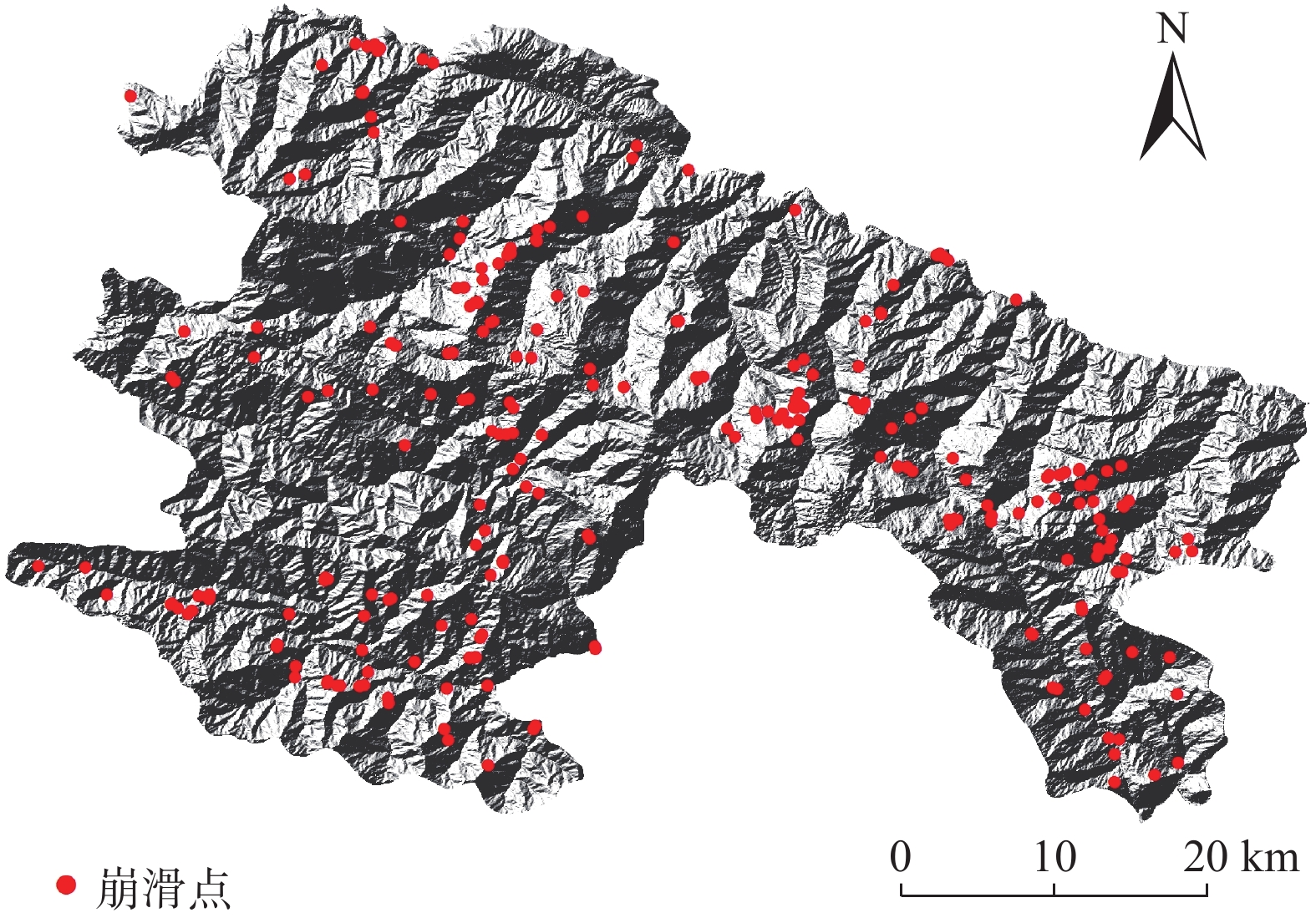
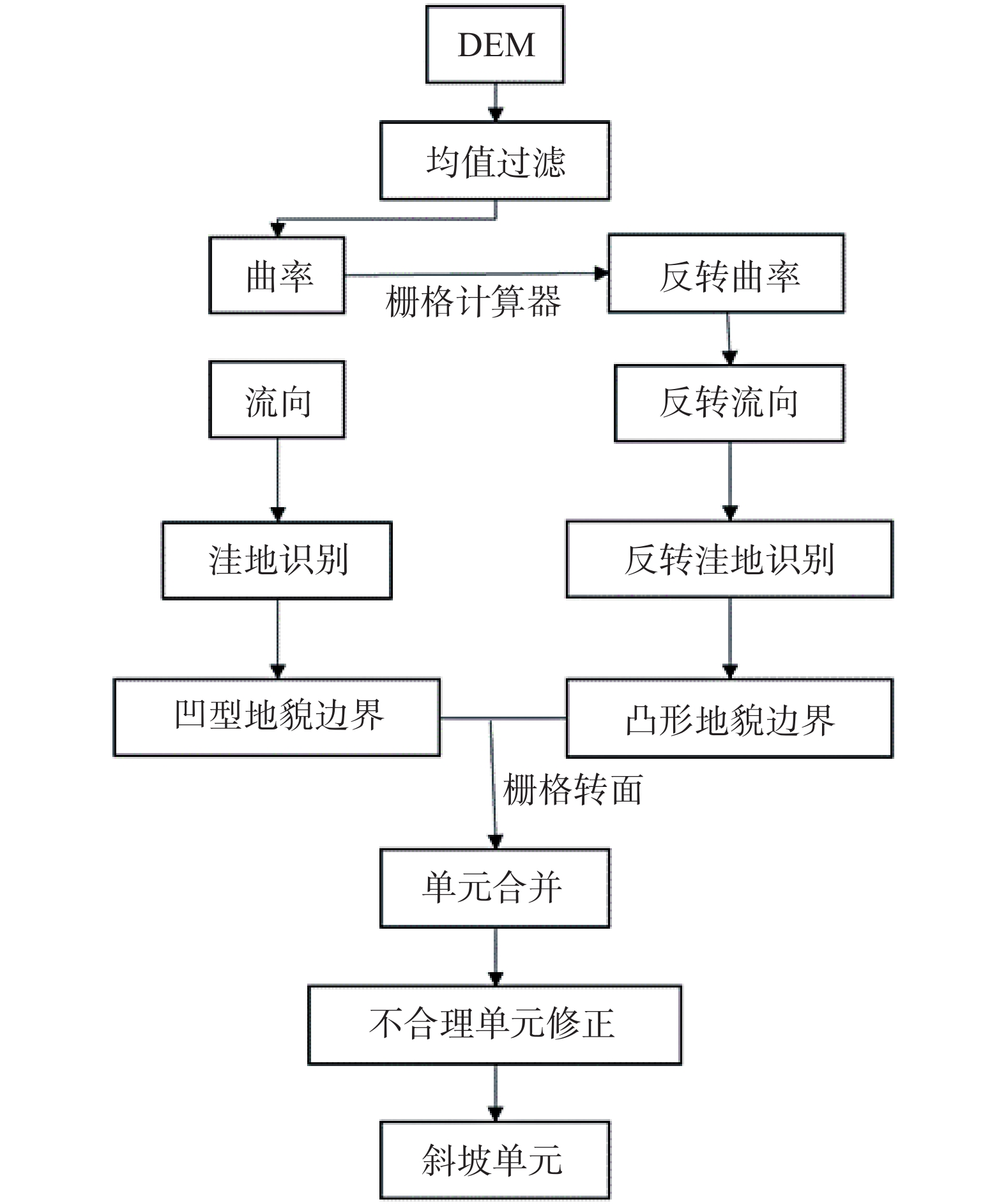

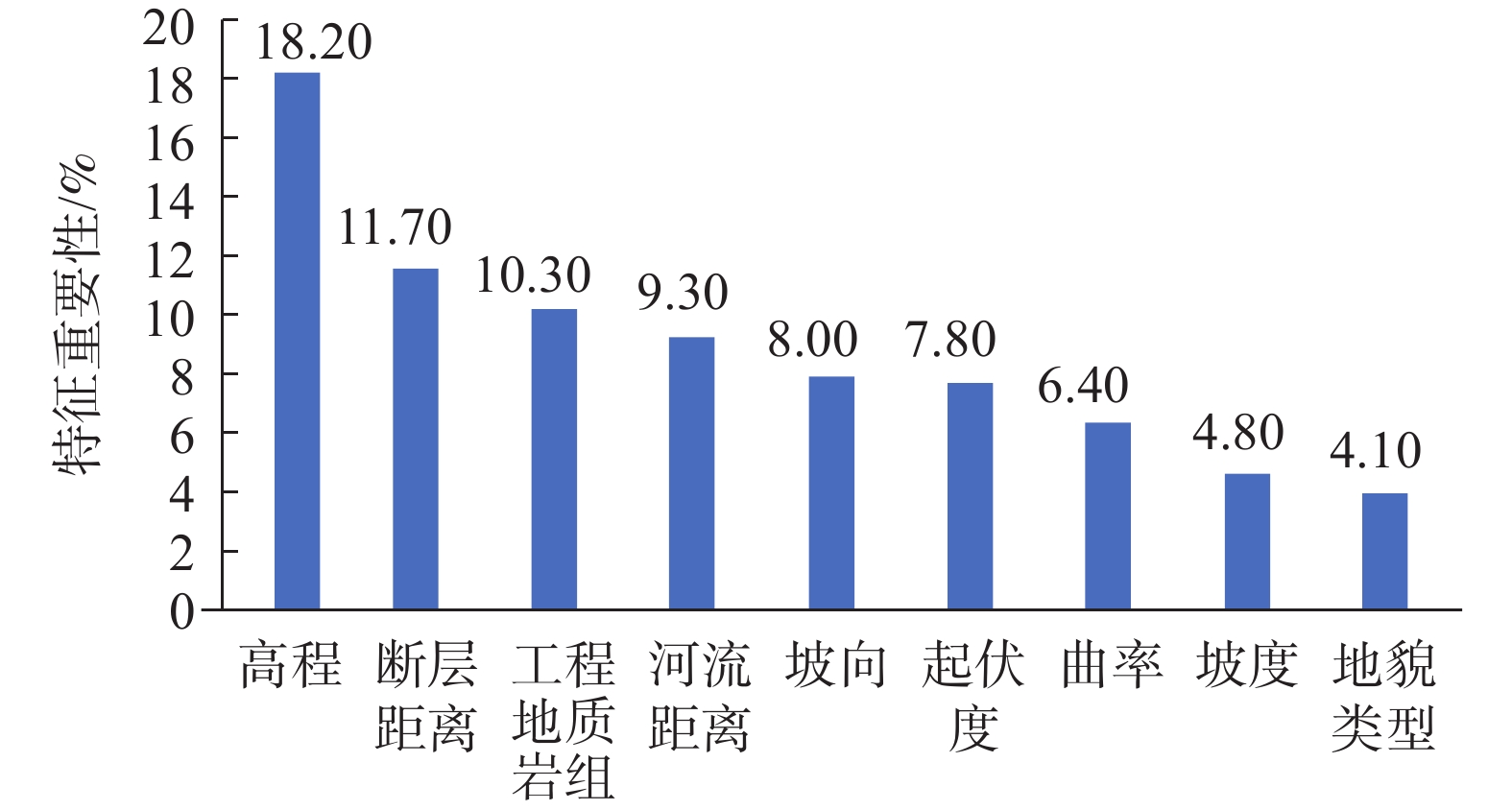

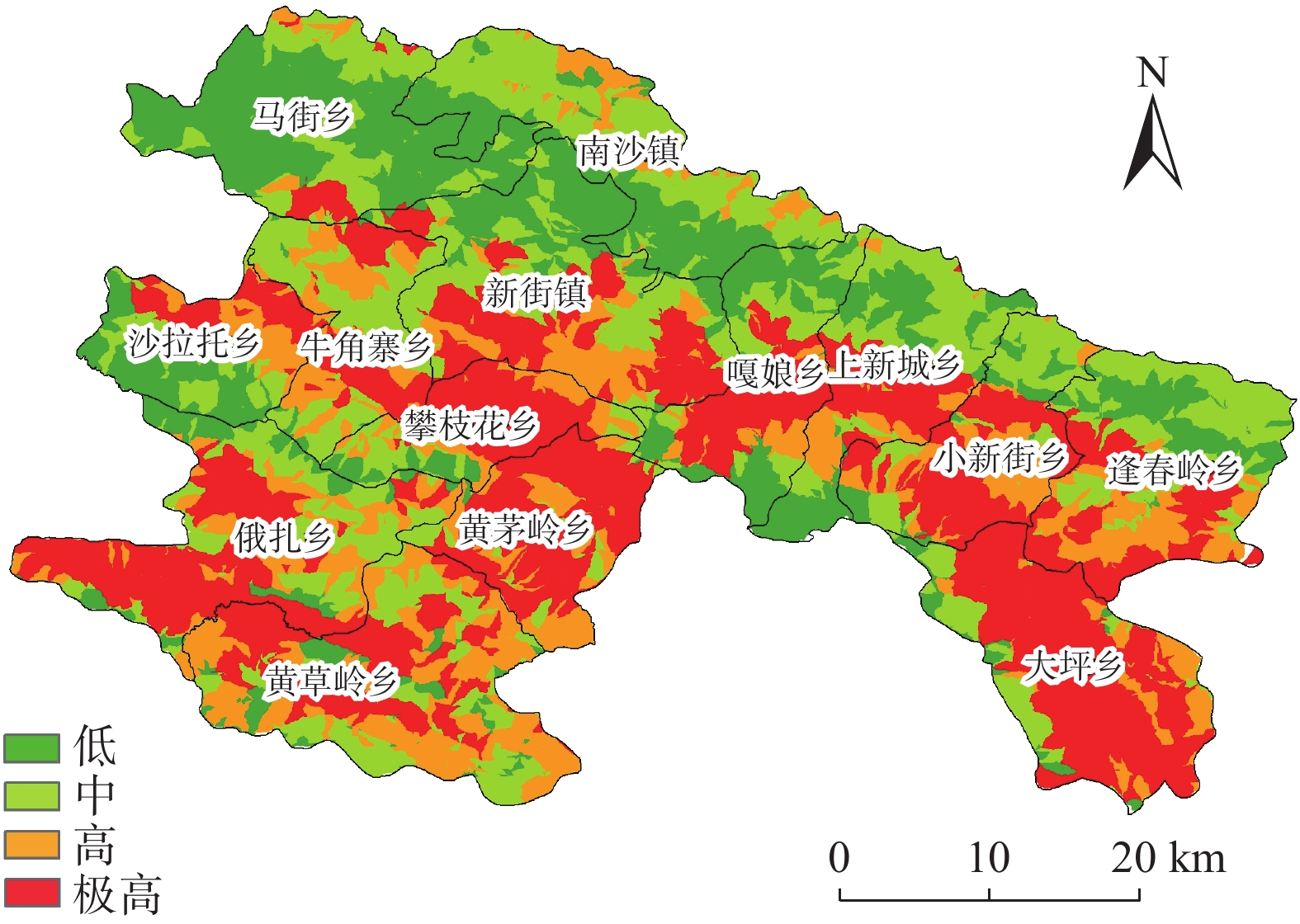
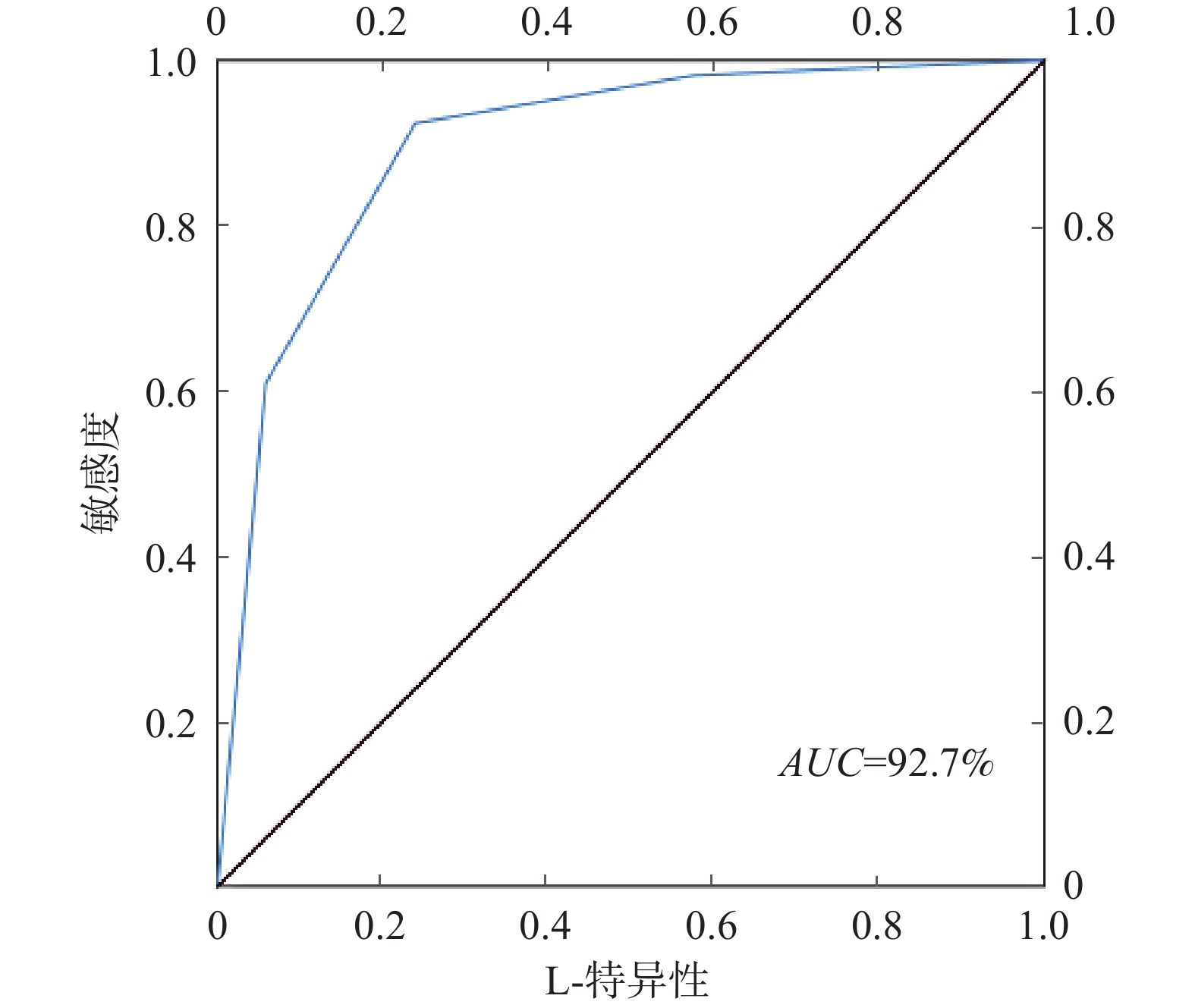
 邮件订阅
邮件订阅 RSS
RSS